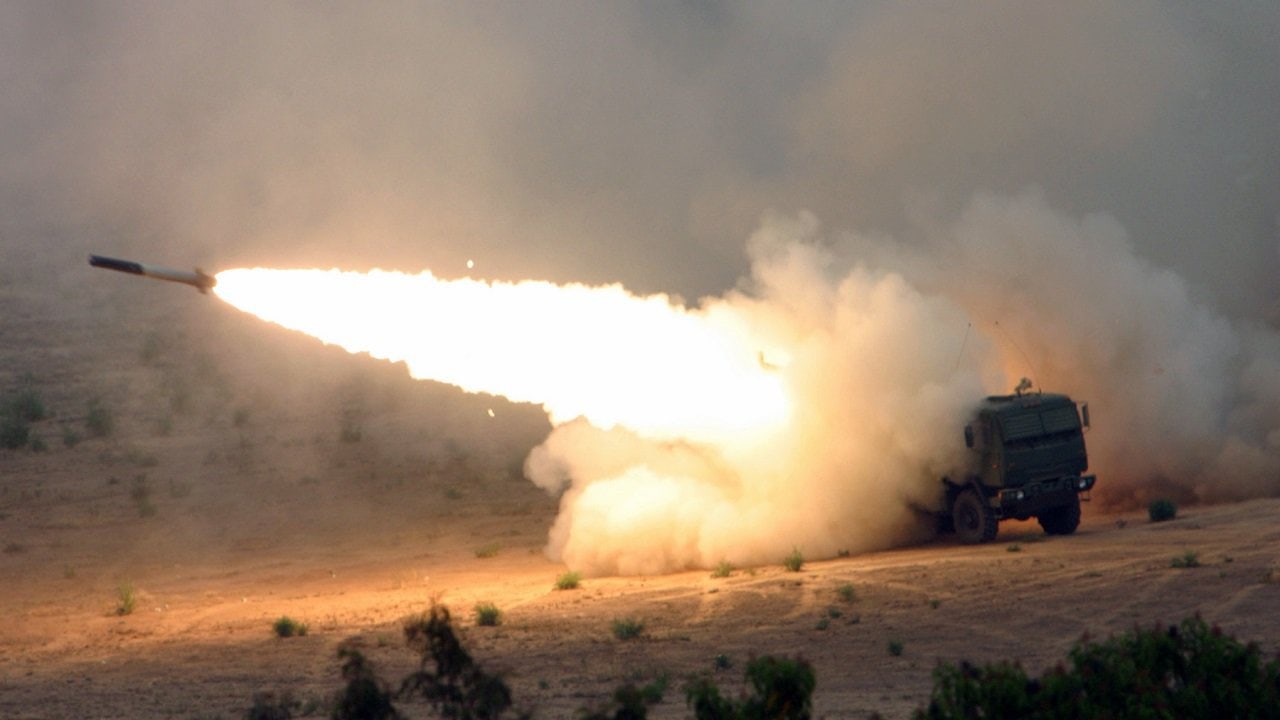HIMARS: The MLRS Rocket Launcher Ukraine Needs to Right Russia? You Decide: My editor recently brought to my attention an article in The WarZone titled “The Reality Of What HIMARS Rocket Artillery Systems Can And Can’t Do For Ukraine,” written by Joseph Trevithick and Travis Rogoway – two outstanding defense journalist we have tremendous respect for here at 1945. With that in mind, let’s take a deeper dive into the HIMARS capabilities with specific attention paid for what they could do for Ukraine in their battle for freedom against Russia.
High Marks for the HIMARS?
HIMARS refers to the s the M142 High Mobility Artillery Rocket System, which the Biden Administration is contemplating sending to Ukraine as part of the next military assistance package.
Another possibility is the M270 Multiple Launch Rocket System, which was first battle-proven during Operation Desert Storm in 1991, proved its mettle again during Operation Iraqi Freedom and Operation Enduring Freedom, and still remains the most common rocket artillery system in NATO.
Yet other possibilities are the Warsaw Pact-bred (as in Czechoslovakia) RM-70, the Romanian LAROM, and the Turkish T-300 Kasirga.
As Newsweek recently explained, the M142 HIMARS was developed in the late 1990s. Its standard issue munitions can hit targets nearly 200 miles away. Furthermore, and quite impressively specialized precision munitions can put the HIMARS in range of targets 300 miles away. In theory, Ukraine could use these weapons to easily strike targets inside Russia, something the Kremlin is clearly worried about.
The system has seen recent interest from NATO nations, with Poland buying twenty launchers in late 2018. Romania also bought the HIMARS in early 2018.
Regarding the HIMARS in particular, Messrs. Trevithick and Rogoway assert that “A transfer of HIMARS to Ukraine could certainly be a much-needed boon for the country’s armed forces, but it wouldn’t necessarily have an instant game-changing impact on the conflict as some have suggested.” That “some have suggested” bit is referencing an article by another 1945 colleague of mine, Sebastien Roblin.
The Highs and Lows of HIMARS
On the plus side, the authors acknowledge that the HIMARS would entail fielding a new artillery rocket system that is in production and has a well-established supply chain in place in the West, which in turn would equate to a huge modernization boost over the Soviet Cold War-era equipment that constitutes the bulk of Ukraine’s rocket artillery arsenal.
Needless to say, Ukraine won’t be able to count on post-Soviet Russia as a willing supplier of armaments anymore.
Another positive that Trevithick and Rogoway grant to the prospective Ukrainian acquisition of HIMARS is that it likely to be a generally more accurate system, even with unguided rockets, than any of the rocket artillery systems that are currently in Ukrainian service: “The fact that the same launcher can fire ATACMS gives it additional flexibility and a true long-range standoff precision capability beyond the limitations of traditional MRLS.”
From there, these authors go on to raise several potential downsides. In fairness, some of these disadvantages have already been acknowledged by Mr. Roblin in his own piece. Quoth Trevithick and Rogoway, “For instance, precision-guided 227mm rockets and ATACMS missiles are not ideally employed in mass volleys against broad area targets, such as the enemy armor or artillery formations that Ukrainian forces are staring down in the Donbas region…It is not hard to imagine that they would be employed very selectively in instances where the extended range and ability to hit pinpoint targets could be best exploited, with more traditional rockets still providing massed fires against hostile forces.” To use a small arms analogy, that’s like using a sniper rifle in applications for which either a shotgun or a submachine gun might be better suited.
There is also operational security (OPSEC) concerns, namely over the thought of technologies within the HIMARS’s 227mm rockets and ATCMS missiles—not to mention the launcher itself—being captured by the Russians and thus providing Putin’s forces wth a battlefield intelligence bonanza. There are the issues of expense—$800K per round in the case of the ATCMS—and limited availability.
Then, of course, there are the political considerations, such as the potential for violation of the Missile Technology Control Regime (MTCR) if the U.S. were to indeed furnish ALCMS to Ukraine. Without such precision guided munitions, the Ukrainian forces would presumably have to turn to unguided cluster munitions to feed their HIMARS, which in turns could have the pitfall of robbing Ukraine of some degree of moral high ground in their struggle against Moscow, as the Russian invaders have already been actively criticized for its often indiscriminate employment of cluster munitions. And even when one puts pragmatics over politics, HIMARS uses different munitions and requires Ukrainian crews to master the operation and maintenance of unfamiliar new systems.
Having made a couple of references to Sebastien Roblin’s article, I’ll let Sebastien have the last word: “Russian forces in turn will attempt to locate and destroy the largely unarmored M142s, particularly using Orion and Forepost-R drones. Ukraine’s ability to relay useful and timely targeting data to HIMARS batteries, promptly shoot-and-scoot to avoid retaliatory fire, and keep them otherwise concealed will determine their success in the field.”
Christian D. Orr is a former Air Force officer, Federal law enforcement officer, and private military contractor (with assignments worked in Iraq, the United Arab Emirates, Kosovo, Japan, Germany, and the Pentagon). Chris holds a B.A. in International Relations from the University of Southern California (USC) and an M.A. in Intelligence Studies (concentration in Terrorism Studies) from American Military University (AMU). He has also been published in The Daily Torch and The Journal of Intelligence and Cyber Security.

